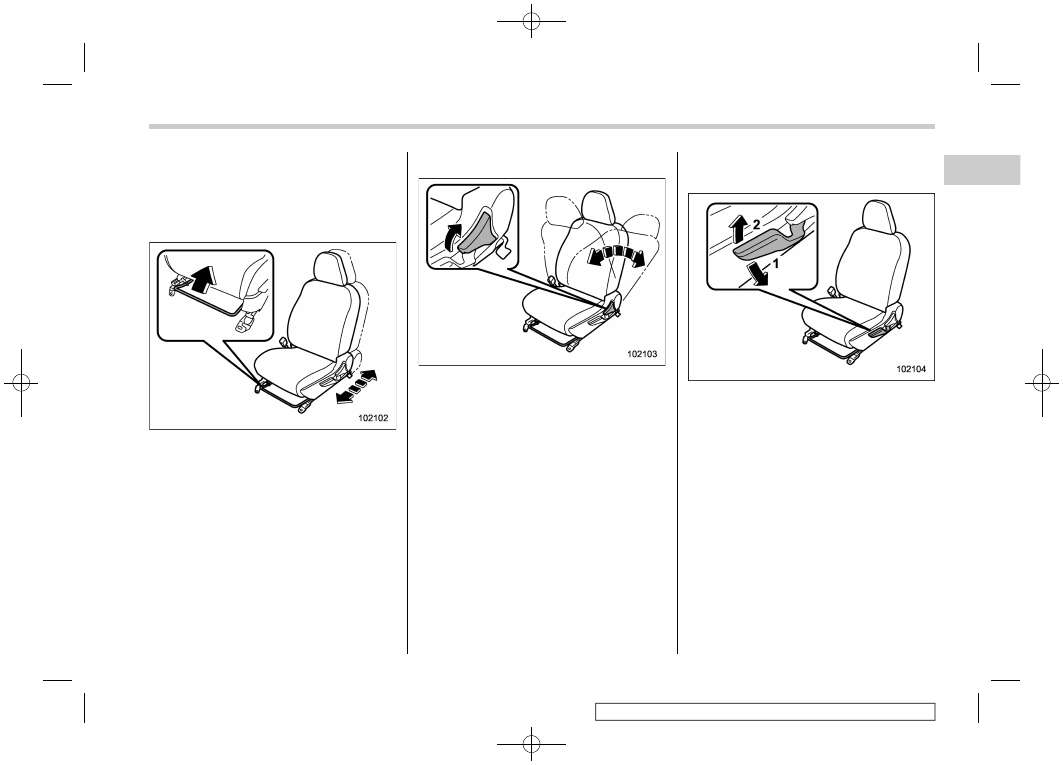Subaru Impreza (2019 year). Instruction - part 3

(37,1)
北米Model "A1350BE-A" EDITED: 2018/ 4/ 20
&
Front seats
!
Manual seat (if equipped)
!
Forward and backward adjust-
ment
Pull the lever upward and slide the seat to
the desired position. Then release the
lever and try to move the seat back and
forth to make sure that it is securely locked
into place.
!
Reclining the seatback
Pull the reclining lever up and adjust the
seatback to the desired position. Then
release the lever and make sure the
seatback is securely locked into place.
The seatback placed in a reclined position
can spring back upward with force when
the lever is pulled. While operating the
lever to return the seatback, hold the
seatback lightly so that it may be raised
back gradually.
!
Seat height adjustment (driver’s
seat)
1)
When the lever is pushed down, the seat
is lowered.
2)
When the lever is pulled up, the seat
rises.
The height of the seat can be adjusted by
moving the seat adjustment lever up and
down.
– CONTINUED –
Seat, seatbelt and SRS airbags/Seats
1-5
1